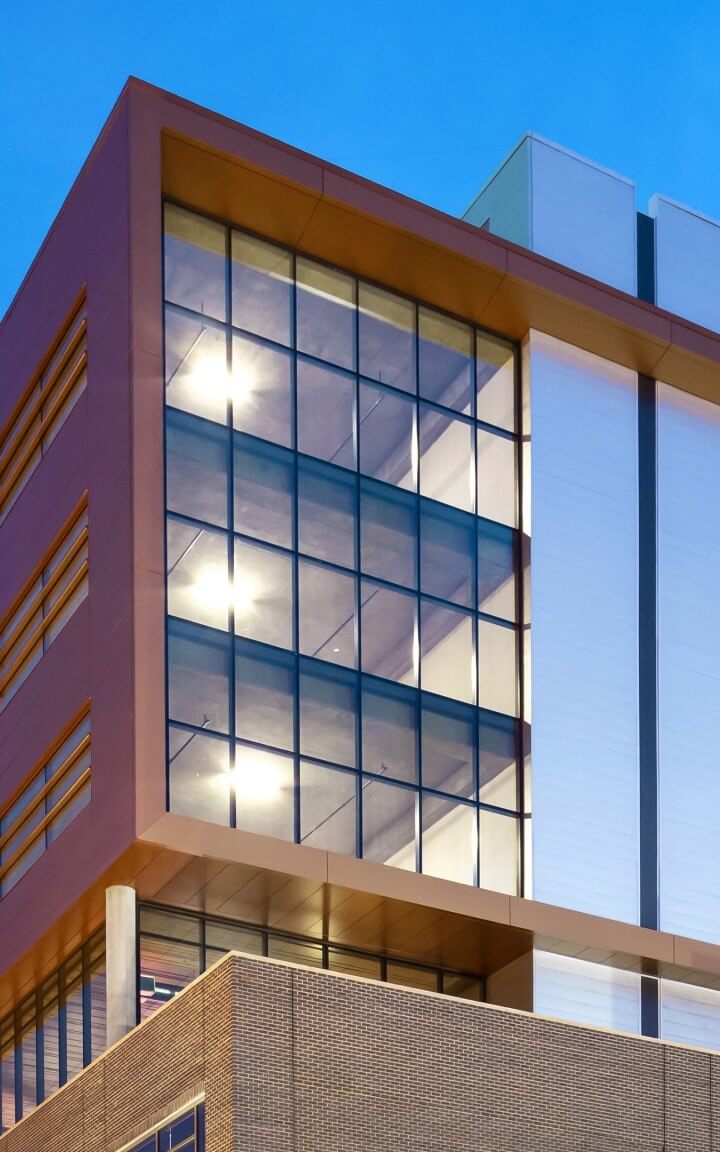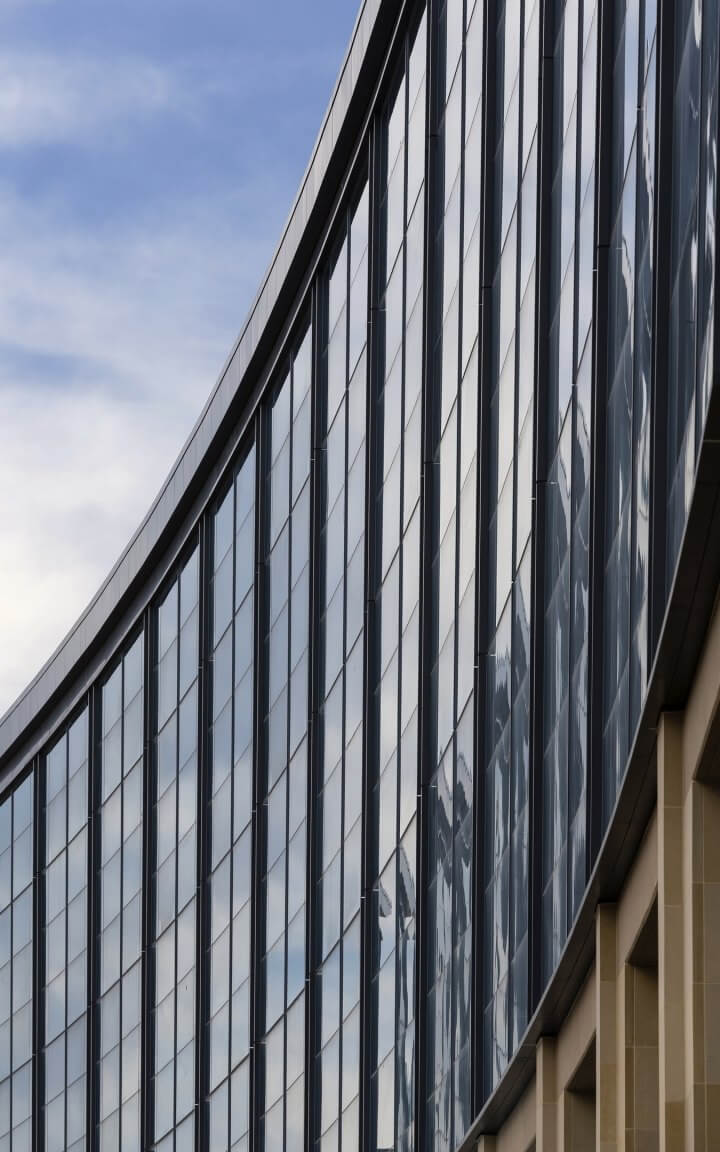Airport Lounges: Making Travel Time Worth the Wait
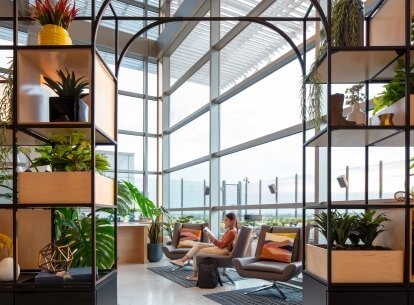
As airport lounges become more popular, lounge owners — airlines, airports, and third-party lounges— are stepping up every element from the look and feel of the space to the amenities offered.
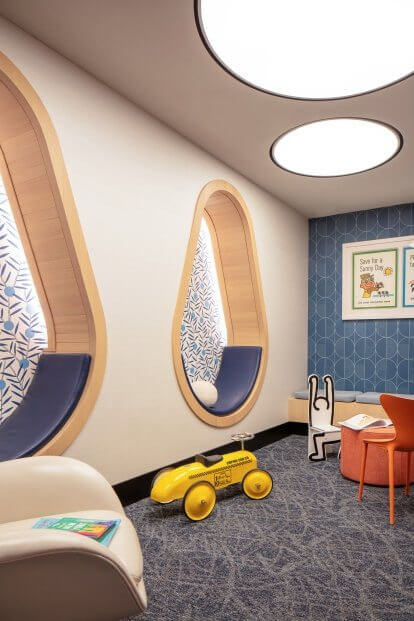
Family rooms provide a space – separate from the main lounge areas – for kids to get their energy out.
Evolved passenger expectations
As recently as fifteen years ago, airport lounges were the realm of the business traveler: they traveled frequently and efficiently. The airport lounge reflected this, with a focus on seating, circulation and basic food and beverage offerings. In this model, the lounges were focused on functionality over hospitality. Since then, the way people travel has changed — the landscape has evolved and leisure travel has taken the spotlight.
As passengers’ behaviors and expectations become more sophisticated, airline clubs and third-party lounges evolved along with them, going beyond functionality to focus on hospitality and a curated experience. Recently constructed lounges have a multitude of amenities that cater to a wider range of passengers, like family rooms for groups with children, luxury spas for guest wellbeing, and elevated food and beverage options for foodie passengers. Well-appointed lounges let travelers feel like their vacation has started early – and who doesn’t want that?
Recent data shows that about half of users care about a lounge’s business facilities, and the vast majority — nearly 80% — are there for the food and drink offerings, as the lounge’s leisure facilities are the next biggest draw. While the trend has been accelerated by the post-Covid travel boom, lounge operators were already anticipating the shift before the pandemic. Younger generations are also more interested in using lounges: data collected by Airport Dimensions reveals that 70% of Millennial and Gen Z travelers say more lounge options would improve their travel experience. As they become a larger portion of the traveling population, airport lounges will only become more popular.
If you build (loyalty) they will come
While lounges are not revenue generators for airlines or credit card companies, they do offer something equally valuable: the opportunity to both set themselves apart from their competitors and reward brand loyalty. Younger travelers tend to not have loyalty to specific airlines, but access to luxurious lounges can be a driver for picking one credit card over another. To capitalize on the opportunity to cement brand loyalty, owners and designers have taken a deep dive into the aesthetics and experiential aspects of the lounge design and amenities.
For third party-operated lounges, the process begins with total transformation of their offerings to not just provide an oasis in the hustle and bustle of the airport but also project a lifestyle and brand that attracts users. In addition to lavish design, lounges provide amenities like restaurants with celebrity chefs, mixologists, sommeliers, and high-end spa brands to set themselves apart from their competition. New lounges, like the Chase Sapphire Lounge at LaGuardia Airport in New York (LGA), are filled with bespoke finishes, local touches, and unique “discovery moments.”
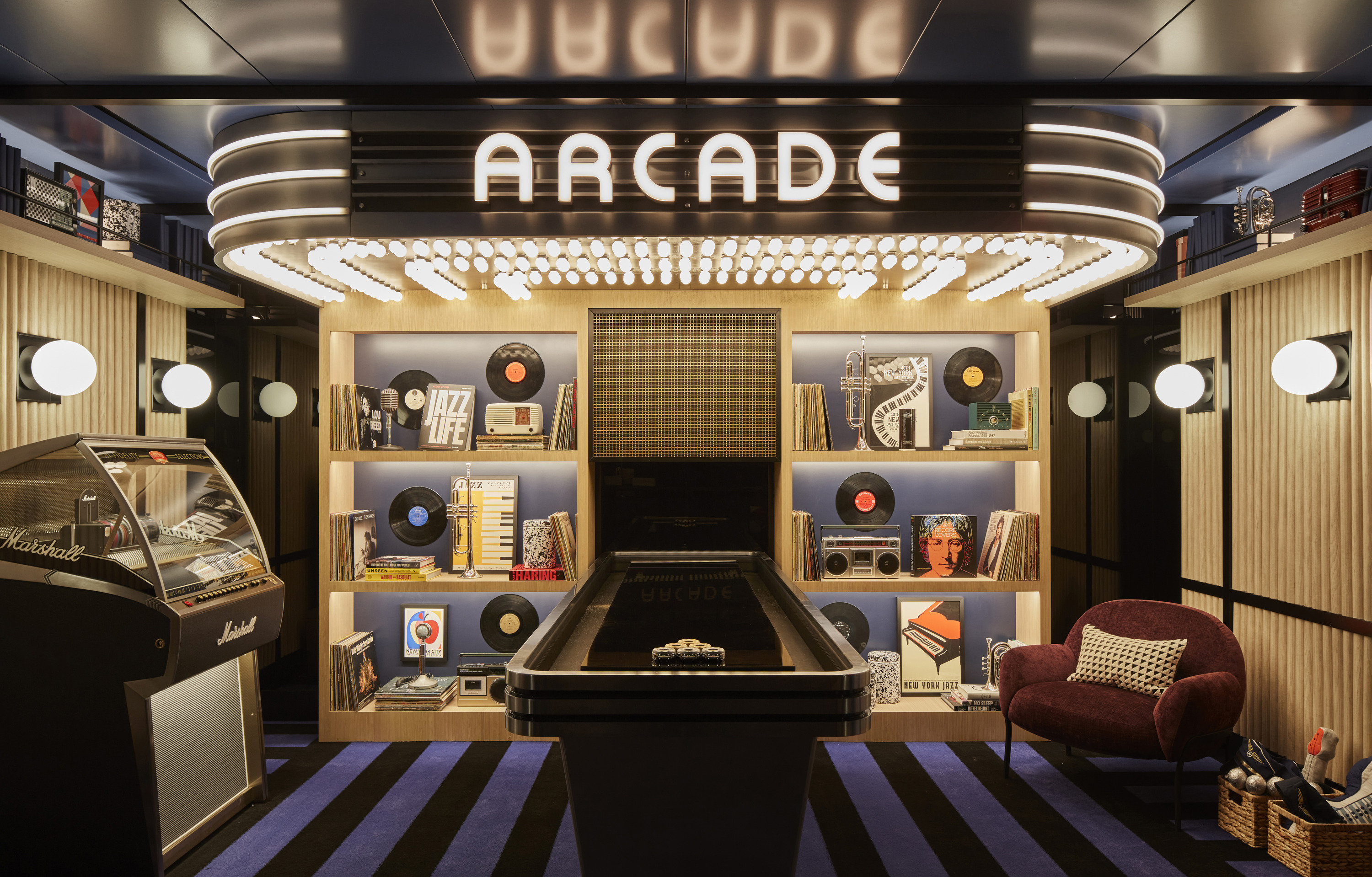
It’s not just about what the lounge looks like - it’s about what it feels like. Refining the passenger experience is of utmost importance when it comes to building loyalty: there is a strong correlation between passenger experience and a company’s reputation and offering great customer service can increase revenue by 4% to 8%. In lounges, there is a strong focus on seamless service and hospitality as well as facilitating “discovery moments” that capture a sense of place with unique design elements and experiences. At the Chase Sapphire Lounge in LGA, the arcade room and photobooth provide both, leaving guests with a fun memory in a one-of-a-kind space.
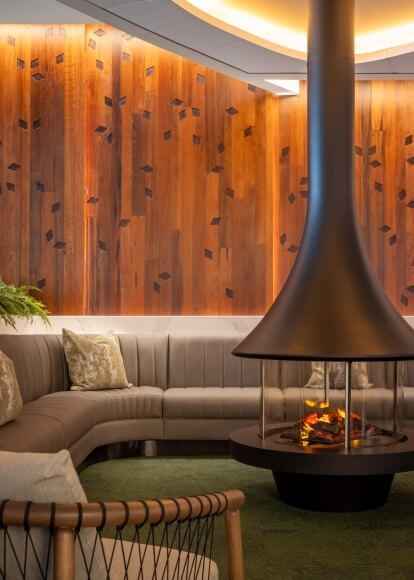
Touches that reference the local culture are one way designers can make a lounge feel special.
Keeping it local
Currently, third-party credit card lounges are leading the way in design and amenities, but airlines and airports are paying attention to current trends and looking to evolve their spaces. Third-party owners are offering the lounge experience without requiring a first-class ticket. The newly opened The Club SFO incorporates locally inspired design and amenities, including wellness room, rest lounge, and luminescence room to tune travelers’ circadian rhythms. The Club’s design stays true to SFO’s (San Francisco International Airport) sustainability initiatives and achieved LEED Gold certification.
The Club SFO features a cozy micro-climate “living room” complete with vapor fireplace and radiant heating, along with materials that reflect the Northern California redwood forests. Even the food and drink options are tailored to the region, something that more airline lounges are looking to do to enhance the guest experience. As lounge options increase, it's important for brands to differentiate themselves not just from other operators, but from other locations. Brands are looking for spaces that reflect their ethos as well as the local culture — and that create a memorable moment that stays with passengers after their trip is over.
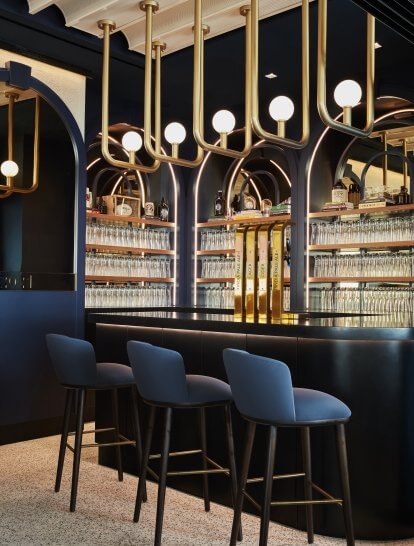
Lounges should look luxe but be tough wearing, so designers need to select materials carefully.
New challenges
While airport lounge design is getting increasingly more hospitality-focused, the design criteria is more involved and complicated than restaurants or hotels: airports have stringent security requirements, accessibility standards, fire codes, and are used by thousands of people over long hours every day. Designers have to be innovative when sourcing materials that can stand up to daily wear and cleaning protocols while providing a luxurious look and feel as well as developing code compliant details that elevate the guest experience.
Another key hurdle that interrupts a good passenger experience is overcrowding. As the newest frontier for improving the guest experience becomes more crowded, it begs the question of when the lounge “experience” begins. Technology that allows guests to easily book tables, order food, or reserve spa slots is key in providing excellent customer service. But what if the app could also use AI to anticipate peak times and offer alternate options (aligned with guest preferences, naturally) for dining or entertainment? When a lounge does have to turn away guests, are there any features designers can curate to make the frustrating experience of waiting in line any better? With limited square-footage and growing interest, designers and lounges owners alike will need to continue to up the ante of both the physical space and hospitality features.
